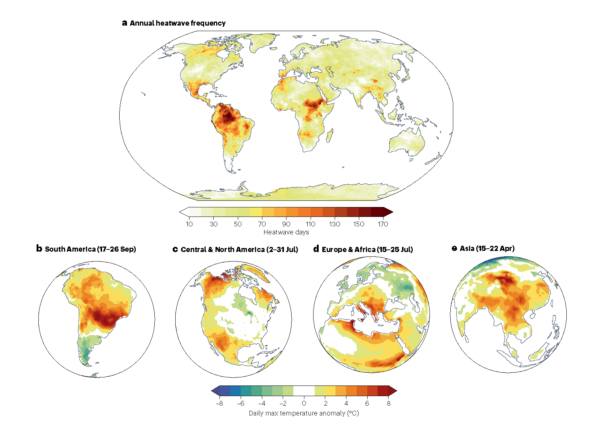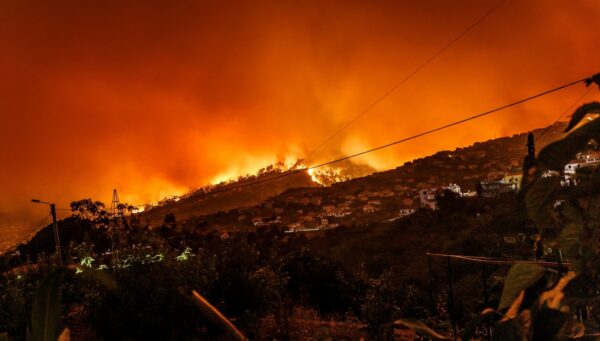Extreme terrestrial heat in 2023
Authors
Sarah Perkins-Kirkpatrick, David Barriopedro, Roshan Jha, Lin Wang, Arpita Mondal, Renata Libonati and Kai Kornhuber

Multiple relentless heatwaves occurred in 2023, with much of the world experiencing at least 20 more heatwave days than the 1991–2020 average. Prominent and record-breaking events included exceptional wintertime and spring heat in South America, large heatwaves over Europe, Africa and Asia, and a prolonged event over south-eastern USA and Central America.
Key points
- Persistent heatwaves across much of the globe were synonymous with the hottest year on record.
- Many 2023 heatwaves exhibited record-smashing extreme temperatures, including a widespread heatwave spanning Thailand to Northern China that featured the worst April heatwave in South China on record.
- South America saw many prominent heat events, with exceptional heat in winter and early spring that broke all-time summertime records.
2023 was the hottest year on record. The global average temperature was 1.45 °C above pre-industrial (1850–1900) values, beating the previous record, which was set in 2016, by 0.16 °C. Behind this remarkable anomaly were many global temperature records, including: the hottest month and season ever recorded (July and June–August; both approaching 17 °C, which is 0.72 °C and 0.66 °C above average, respectively); daily instances of global temperatures 2 °C above pre-industrial levels; and 23% of land regions setting new extreme heat records. However, these figures hide the plethora of extraordinary daily and regional-scale terrestrial heat extremes, each linked to a combination of large- and local-scale drivers and feedbacks, such as anthropogenic climate change, persistent atmospheric blocking, droughts, adjacent marine heatwaves and the developing El Niño.
Here, we summarize extreme terrestrial heat events during 2023 using ERA5 reanalysis. Not all events — of which there are many — are discussed, and Australia is omitted, since record-breaking heat extremes over this continent were minimal. Throughout, anomalies are calculated with respect to 1991–2020.
Heatwave activity in 2023












